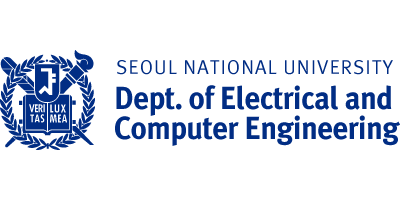About the Laboratory & Research Area
The Electrical-Medical Convergence Laboratory at Seoul National University aims to enhance the quality of life for visually impaired individuals through interdisciplinary research that bridges electrical engineering, medicine, and biotechnology. The lab’s primary focus is the development of artificial retina devices, which restore vision by transmitting visual information via electrical signals in place of damaged retinal cells.
The research team, composed of experts in ophthalmology, electrophysiology, biomedical engineering, and microfabrication, is advancing retinal stimulation technologies and neural interfaces. Recently, the lab developed a novel artificial retina using advanced materials that can operate reliably in vivo for over 10 years, with customized designs to fit patients’ eye shapes and minimize surgical side effects. By integrating ultra-miniaturized circuits and cutting-edge materials, the device’s circuitry has been reduced by more than 50% compared to existing products, focusing on long-term implantation and high-resolution stimulation. These achievements have been presented at international conferences such as the World Congress of Artificial Vision, bringing the technology closer to practical application.
Beyond artificial retinas, the laboratory continues to explore innovative neural augmentation technologies and objective vision assessment methods based on biosignals, leading the field of electrical-medical convergence research
The research team, composed of experts in ophthalmology, electrophysiology, biomedical engineering, and microfabrication, is advancing retinal stimulation technologies and neural interfaces. Recently, the lab developed a novel artificial retina using advanced materials that can operate reliably in vivo for over 10 years, with customized designs to fit patients’ eye shapes and minimize surgical side effects. By integrating ultra-miniaturized circuits and cutting-edge materials, the device’s circuitry has been reduced by more than 50% compared to existing products, focusing on long-term implantation and high-resolution stimulation. These achievements have been presented at international conferences such as the World Congress of Artificial Vision, bringing the technology closer to practical application.
Beyond artificial retinas, the laboratory continues to explore innovative neural augmentation technologies and objective vision assessment methods based on biosignals, leading the field of electrical-medical convergence research
Research Interests & Projects
Artificial Vision Research for the Visually Impaired
A multidisciplinary team from ophthalmology, electrophysiology, biomedical engineering, electrical and computer engineering, and microfabrication collaborated on five subprojects, including analysis of cortical responses to retinal stimulation, development of objective evaluation methods, creation of multichannel stimulation systems and bio-conformal neural electrodes, real-time image acquisition with gaze tracking, and integrated modeling of retinal visual processing.
Development of Bacteriobots
Research combining bacterial chemotaxis and MEMS technology to develop ultra-microscopic robots, called bacteriobots, for applications such as cancer treatment.
Development of Bladder Stimulators for Urinary Dysfunction
Developed bladder stimulators that implant biocompatible microelectrodes into the sacral nerve to electrically stimulate and restore urinary function in patients with sacral nerve injury or dysfunction.
Study on Ocular Deformation after Surgery
Developed and validated geometric models explaining optical changes in the eye following ophthalmic surgery.
Development of Medical Devices for Ophthalmic Diseases
Developed diagnostic and therapeutic devices for ophthalmic diseases based on electrical engineering technologies.
A multidisciplinary team from ophthalmology, electrophysiology, biomedical engineering, electrical and computer engineering, and microfabrication collaborated on five subprojects, including analysis of cortical responses to retinal stimulation, development of objective evaluation methods, creation of multichannel stimulation systems and bio-conformal neural electrodes, real-time image acquisition with gaze tracking, and integrated modeling of retinal visual processing.
Development of Bacteriobots
Research combining bacterial chemotaxis and MEMS technology to develop ultra-microscopic robots, called bacteriobots, for applications such as cancer treatment.
Development of Bladder Stimulators for Urinary Dysfunction
Developed bladder stimulators that implant biocompatible microelectrodes into the sacral nerve to electrically stimulate and restore urinary function in patients with sacral nerve injury or dysfunction.
Study on Ocular Deformation after Surgery
Developed and validated geometric models explaining optical changes in the eye following ophthalmic surgery.
Development of Medical Devices for Ophthalmic Diseases
Developed diagnostic and therapeutic devices for ophthalmic diseases based on electrical engineering technologies.
Journals & Patents
https://scholar.google.com/citations?user=GM6EGH0AAAAJ&hl=ko



